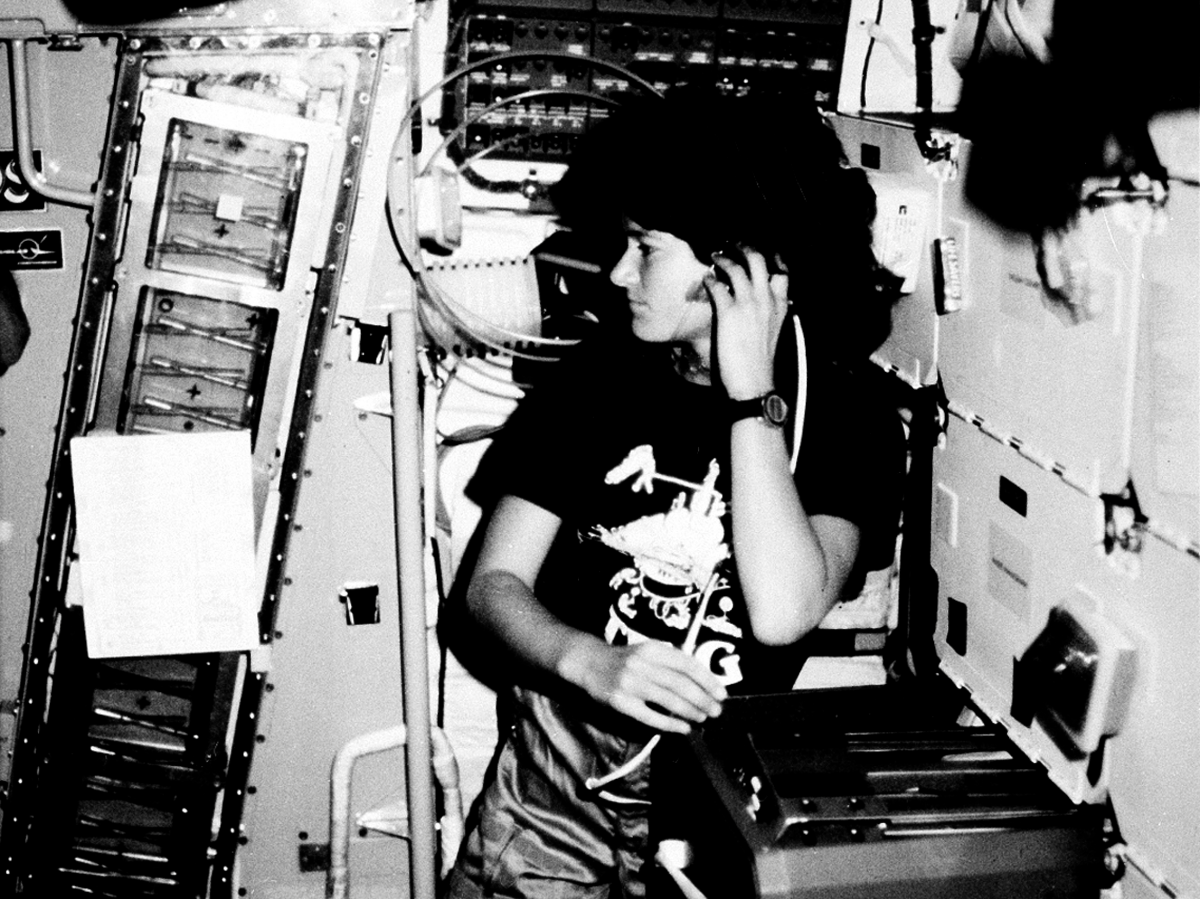Power Up: Astronaut Megan McArthur
By Greta Johnsen

Power Up: Astronaut Megan McArthur
By Greta JohnsenNear the end of STS-125, NASA’s final space shuttle mission to the Hubble Space Telescope back in 2009, bad weather in Florida initially stopped the seven-member team from returning to Earth.
“We couldn’t land,” said Megan McArthur, a mission specialist on the Space Shuttle Atlantis. “So they just kept sending you around.”
The two-day delay that followed presented the astronauts with some unusual but much needed downtime. So what did they do with it?
Looked out the windows.
“I liked to listen to music and watch the world go by,” McArthur told Nerdette host Greta Johnsen. “It was pretty awesome.”

For our new project, Power Up, we’re asking fascinating people to explain how they set themselves up for success while living in (and, in this case, off of) an exhausting world.
McArthur told us about the seemingly difficult task of relaxing in outer space. She also described her role in helping the American Girl doll company create Luciana, a Chilean-American who is an aspiring astronaut.
“It helps for people to see a role model who represents them, right?” McArthur said of Luciana. “[Someone] who looks like them, maybe who has a similar experience as they have, in order for them to imagine themselves in that same kind of environment.”
McArthur described her own experience meeting a role model: astronaut Sally Ride, who McArthur says she met when she was 16 years old. She says the 20-minute conversation with Ride, the first American woman to travel to space, was “a special and unique experience for someone just starting to think about what they want to do with their life.”
Below are more highlights from the conversation.

How she became an astronaut
Megan McArthur: My dad was in the Navy. He was a naval officer at a base in California … that shares a space with Ames Research Center. So I would see astronauts come there and land in their T-38 jets and get out and come inside the simulator to practice landing the space shuttle. So that was kind of my first awareness that these are real people that have a real job, you know? It’s not just something that’s happening on TV.
That’s around the same age when people start asking you, “Hey, what do you want to be when you grow up?” And so partly seriously, partly not, I would say, “I want to be an astronaut. And if I can’t do that, I want to work for NASA. I want to be part of the space program.”
As a 16-year-old, you sort of have an ill-formed notion of what that really means. But by sharing it with people — with my parents, with some of their friends — it opened up these opportunities, like meeting Sally Ride, where I could learn more about what the job was like, what kind of people did that job, what it would take education-wise to get there, to be prepared in case I was lucky enough to get a chance to do it.

On the long-term effects of meeting Sally Ride at an early age
Greta Johnsen: Was there any specific thing she said to you or a moment you had that you carried with you?
McArthur: I think just her acceptance of it as a realistic goal, if that makes sense. It was just like, “Of course, that’s a great thing to want to do.” It wasn’t discouragement. It wasn’t, “Hey, that’s going to be really hard.” It just was much more practical. And I think that made me realize that it could be considered a practical goal even though, of course, it’s a tremendous long shot.

How to recharge your batteries 🚀 IN SPACE 🚀
McArthur: It’s not too terribly different from being on Earth when you have a packed schedule and you have to really make sure that you’re getting enough sleep [and] you’re remembering to eat. All of those things are true in space as well. Things will run overtime, things will take more time than you’re expecting, things won’t go exactly right.
And then when you do have free time: Hey, you’re in space! You don’t want to go to bed. You want to look out the windows. So we did have to kind of police each other a little bit to say, “Hey, we need to get some rest. We need to go to bed now.” You just have to look out for each other.

How leaving Earth can change your perspective
McArthur: I think the main change in my perspective, or the sort of reinforcing of the perspective when you watch the world go by, is you realize how fragile our planet is. How fragile the atmosphere that protects all of us is. You see this thin little lens of atmosphere surrounding our planet, protecting us from the vast blackness of space, and when you see that you realize how important it is to do our part to protect our planet. That was the big perspective change for me being in space, and it’s very profound.

McArthur: It was an incredibly special privilege to get to be in space for those couple of weeks. And you do try to reflect back on it when you’re having a difficult moment.
Tell us how YOU power up. Record yourself on your phone and email the audio file to nerdettepodcast@gmail.com.
This interview has been edited for brevity and clarity. Click the “play” button to listen to the entire conversation, which was produced and adapted for the web by Justin Bull.
